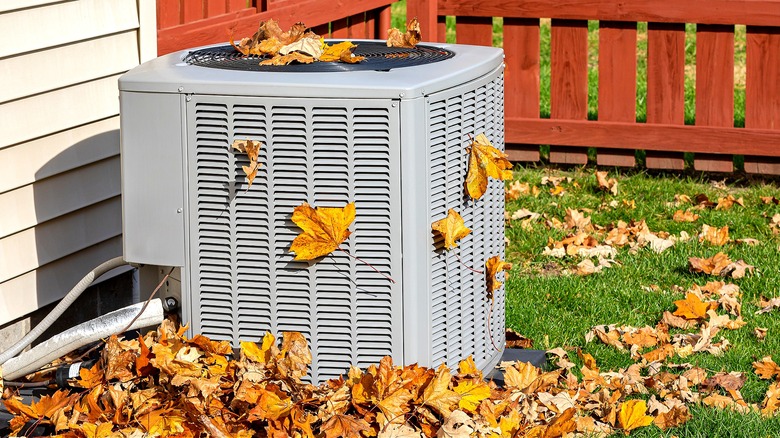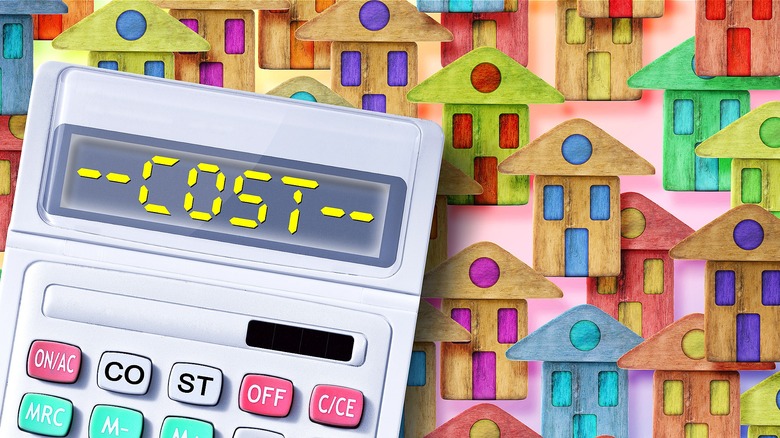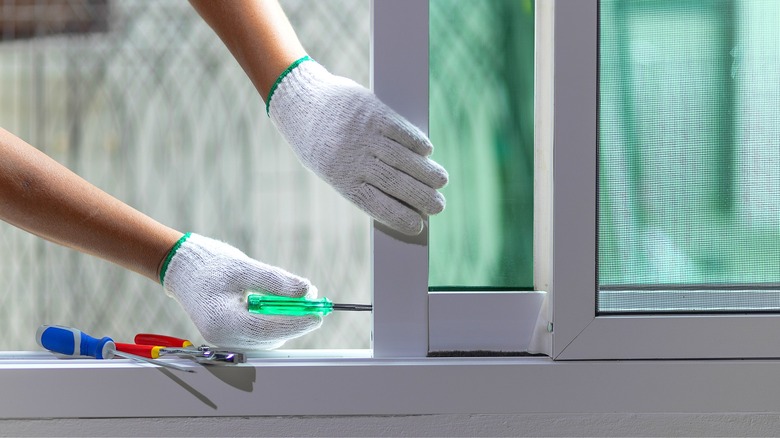Neglecting These Home Maintenance Red Flags Will Cost You A Fortune
The amount of money the average person will spend in their lifetime is around $3.45 million, and a home will be (for most) the biggest purchase made. From a person's lifetime spending, analyses place the cost of a home between 23% and more than 44%. Given those numbers, it stands to reason you'll want to take care of your home (just as you would anything you invest money in) and protect it from losing its value over time. To do so, it'll take routine home maintenance and not neglecting red flags when you find them.
These red flags include water stains, which could go from something small to something serious if left to grow (it could be a leak); clogged gutters, which could result in roof and foundation damage; and plumbing issues, like a slow drain, low water pressure, a rattling of the pipes, and unexplainable odors. While you might think you can live with these problems, failing to fix them while they're in their early stages can end up costing you much more down the road.
Regular maintenance is key
Beyond home maintenance red flags, you'll also want to regularly maintain your home's systems. Inefficient heating and cooling in a home, for example, could be a reason why you need to budget so much for your energy bill each month. According to Forbes, Americans spend, on average, $429 a month on utilities, with energy accounting for about 30% of the bill. Yet, a few simple to-dos could help ensure your system is running as efficiently as it should. And, they don't cost a lot of money either. These include changing your air filter every 90 days, doing a maintenance check on your HVAC at least once a year, and perhaps upgrading your thermostat to a smart one.
Consider, a dirty air filter may be the easily fixed reason your HVAC is working double (perhaps never turning off) to get your home to its set temperature. While air filters can be as high as $50, at The Home Depot, the top-rated filter is less than $2.50, which comes out to around 84 cents every month. Compare this to the potential savings, which the Department of Energy explains could be anywhere from 5% to 15%. Cleaning your air conditioner's coils and coin fins could also help.
Other home maintenance tasks you can take on yourself include sealing up cracks and openings, maintaining the lawn, and addressing any plumbing concerns the moment you find them. While it'll cost you some money now to keep your home running smoothly, it'll save you from a potential, expensive homeowner nightmare in the future.
Budgeting for home maintenance
There's more to homeownership than paying your mortgage each month and your taxes each year. Your budget must account for all the expenses involved in running a household, from the groceries to utilities to security. However, many might not think of including in their budgets a category for home maintenance, yet this is a big part of being a homeowner. In addition to regular upkeep (that is, cleaning and inspections), you'll also want to budget for the unexpected, like repairs, upgrades, or replacements.
Like an emergency fund, you may wonder how much you should have in your home maintenance budget. One rule is to set aside a dollar amount equal to 1% of the value of your home. So, a home that's worth $350,000 would need a home maintenance budget of $3,500 a year, or about $291 per month. Note that this is a starting point, as the high end of the 1% rule is actually 4% of a home's value.
So in the case of a $350,000 home, that would be $14,000 earmarked each year for your home's maintenance needs. This is actually closer to what Porch found in its report on the average yearly cost to maintain a home, which was just over $16,000. New Jersey homeowners spend the most: $18,151.


